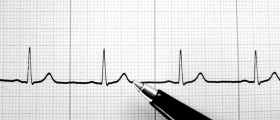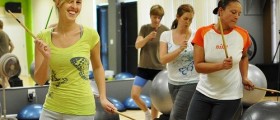
Why to run
Running has many benefits. It will improve the work of your muscles, making them stronger and able to withstand moderate and heavy use for long periods of time, it will improve efficacy of your metabolism and help you keep body fat low. It will also make your cardiovascular system tougher and healthier. However, it is not enough just to go out and run as hard as you can, or to run at a pace just a notch faster above quick walk speed. Proper training is not about running fast or slow. It is about keeping your pulse at an optimal training zone.
Maximal heart rate and zones
Most people know that pulse is measured at rest and that it should be between 60 and 100 beats per minute. Those who train and know how training should be done are more interested in their maximal heart rate, and percentages of it, which determine their training zones. There are numerous, more or less complicated mathematical formulas and tests that are used to determine your maximal heart rate. You are now probably wandering which method gives most accurate results. Well, since you and I are far from pro level athletes, two or three beats per minute off the exact value are irrelevant to us, and we can recommend the simplest, generic formula: maximal heart rate (MHR) equals your age subtracted from 220. For example, if you are 20 years old, your maximal pulse is 200, and if you are 40, it is 180, etc.
MHR = 220-age
Training zones are calculated as percentage of maximal heart rate. What does it mean? For example, a person is 20 years old, and its maximal heart rate is 200. If, at this moment, the pulse of that person is 100 beats per minute, it is at 50% of its maximum heart rate.
Optimal training zone for running, assuming that you are a healthy person with regular, healthy level of fitness, is between 70% and 85% of your maximal heart rate (lower limit = 0.75*MHR, upper limit = 0.8*MHR). This level of load reflects most beneficially on the cardiovascular system.
If your fitness level is wanting or if your health is not where it should be, it is a bad idea to stress your heart that much, and you should stay within 50% - 65% of your MHR while you run. On the other hand, if you re out for performance, be sure to make occasional short bursts into 85% to 90% of your MHR.
Heart rate monitoring
There isn't much wisdom in this. If you want to know what your heart rate is and if it is where it should be, you will need a heart rate monitor. A heart rate monitor includes a sensor, which is strapped around your chest, and a computing unit in the form of a wristwatch. Entry level models cost below $50, and offer little more than displaying your current heart rate, while pro-level models may cost a couple hundred, but can almost replace a personal trainer. Most models are able to warn you (ie, by beeping) if you are outside your optimal training zone (generic values are used, or desired values are entered manually).







_f_280x120.jpg)









Your thoughts on this
Loading...